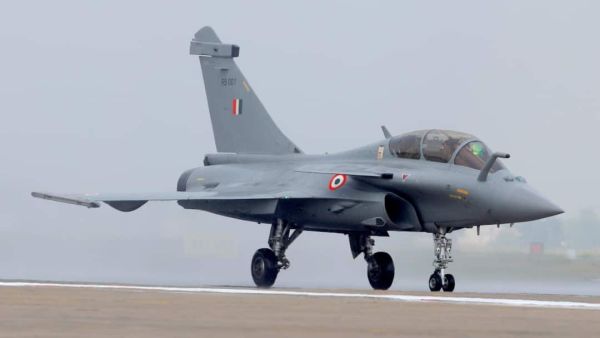
After the India-Pakistan border flare-up in May, triggered by the Pahalgam terror attacks, China allegedly launched a targeted disinformation campaign aimed at derailing French Rafale sales and promoting the sales of its own J-35 fighter jets.
According to the latest US-China Economic and Security Review Commission report, submitted to the US Congress on Wednesday, China used fake social media accounts to circulate AI-generated images showing fabricated “debris” of Rafale aircraft supposedly shot down by Chinese-made weaponry. The images were purposely spread by the social media accounts based in Pakistan to target the Indian Air Force and to impact the sales of Rafale.
The annual report provides a bipartisan assessment of China’s global strategy, offering 28 recommendations spanning technology, economics, and national security. This year’s review also examines how China’s industrial policy has helped it position itself as a frontrunner in emerging technologies.
China’s Growing Strategic Ambition
In the report’s opening statement, Commission Chair Reva Price notes that President Xi Jinping aims to increase global dependence on China, signalling continued heavy state support for strategic industries.
On the India-Pakistan hostilities between 7 and 10 May, the commission states that the brief but intense confrontation “drew global attention” because Pakistan relied on Chinese weaponry and reportedly used Chinese intelligence during the crisis.
The report highlights India’s claim that China provided Pakistan with “live inputs” on Indian military positions, allegations Pakistan denied and China neither confirmed nor rejected.
Beijing’s Military Cooperation With Pakistan Deepens
The review observes that China expanded its military partnership with Pakistan in 2025, further straining its already tense ties with India. While it says labelling the clash a “proxy war” may be an exaggeration, it notes that Beijing “opportunistically leveraged the conflict” to test and showcase its advanced military systems.
The confrontation marked the first real-world combat use of several modern Chinese weapons, including:
- HQ-9 air defence system
- PL-15 air-to-air missiles
- J-10 fighter aircraft
In June 2025, shortly after the clash, China reportedly offered Pakistan a major defence package, including 40 J-35 fifth-generation fighter jets, KJ-500 aircraft, and ballistic missile defence systems.
How China Used the Conflict for Global Arms Marketing
In the weeks that followed, Chinese embassies publicly celebrated the performance of these systems, aiming to boost Beijing’s global arms sales.
The report cites French intelligence assessments claiming that China actively attempted to undermine Rafale exports by circulating AI-crafted and video game–derived images of “destroyed” aircraft.
This online disinformation campaign was allegedly successful enough that Chinese Embassy officials persuaded Indonesia to pause an ongoing Rafale purchase.
Dalai Lama Succession Seen as Future Flashpoint
The commission also warns that the Dalai Lama’s succession could ignite new geopolitical tensions. It predicts two competing successors—one recognised by the Tibetan Buddhist Gaden Phodrang Trust and another approved by the Chinese government.
Beijing lodged formal complaints after Prime Minister Narendra Modi wished the 14th Dalai Lama on his birthday and a senior Indian minister reaffirmed that only the Dalai Lama’s trust has the authority to identify his successor. China urged India to avoid supporting what it called “anti-China separatist activities under the guise of religion”.
The report concludes that the eventual selection of the 15th Dalai Lama will carry significant international implications, potentially shaping diplomatic alignments in the years ahead.
-
RAS Interview Date 2024 Out: RAS Phase-I interviews to begin from December 1, find out where questions are asked..

-
Anganwadi Bharti 2025: Bumper recruitment for women in Anganwadi, 10th-12th pass can fill the form for 6100+ posts..

-
Nursing Jobs: Recruitment of 587 Nursing Officers in Uttarakhand, application process will start from November 27, know details..

-
Digital Life Certificate: How to Submit DLC Using Aadhaar Face ID on Your Smartphone

-
ELSS vs PPF: Which Tax-Saving Investment Works Best for You? Key Differences Explained
